Abstract
A series of events related to the early application of behavioral principles to child behavior and development is described. The events began in the 1930s at Columbia University with a solicited letter from John B. Watson suggesting a master's degree thesis problem, and continued through the 1950s and 1960s at the University of Washington. Specifically, these happenings resulted in (a) research demonstrating that Skinner's laboratory method for studying nonhuman organisms could be profitably applied to the laboratory study of young normal children; (b) a demonstration that by successive approximations, a normal child can be operantly conditioned to respond to an arbitrary situation; (c) research showing that the effects of simple schedules of reinforcement obtained with nonhuman organisms could be duplicated in young normal and retarded children; (d) the demonstration that Skinner's operant laboratory method could be adapted to study young children in field situations; (e) research showing that operant principles can be successfully applied to the treatment of a young autistic boy with a serious visual handicap; (f) laboratory studies showing that mothers can be trained to treat their own young children who have behavior problems; (g) an in-home study demonstrating that a mother can treat her own child who has behavior problems; (h) a demonstration that operant principles can be applied effectively to teaching reading, writing, and arithmetic to children with retardation; and (i) publication of a book, Child Development: A Systematic and Empirical Theory, in collaboration with Donald M. Baer, by Prentice Hall in their Century Psychological Series.
Keywords: child behavior, child development, applied behavior, analysis, research methodology
Full text
PDF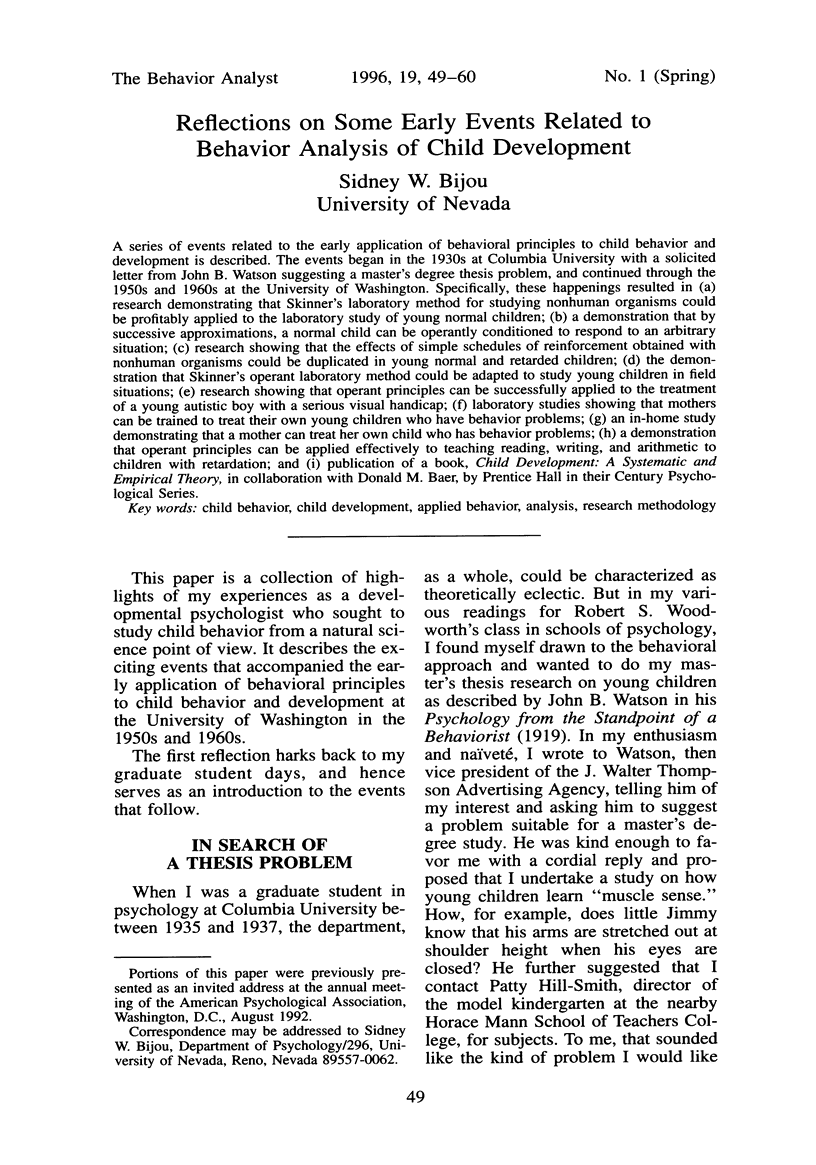
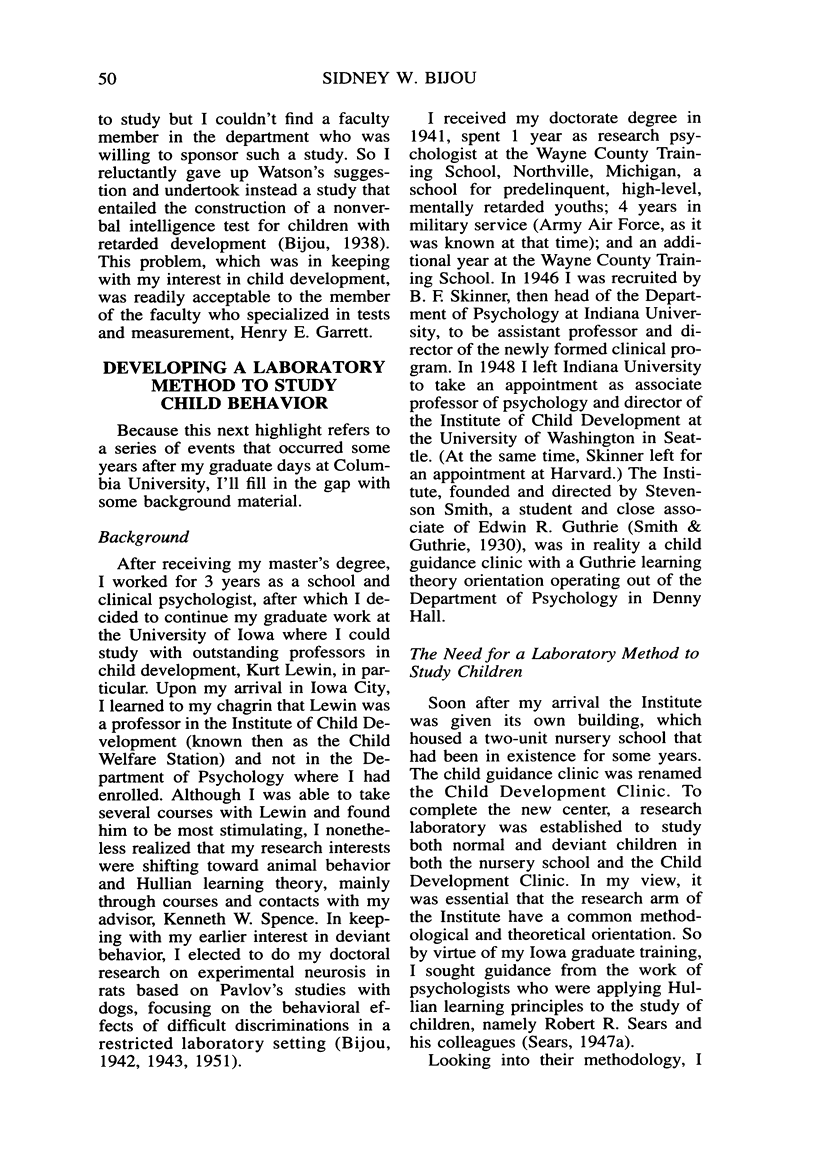
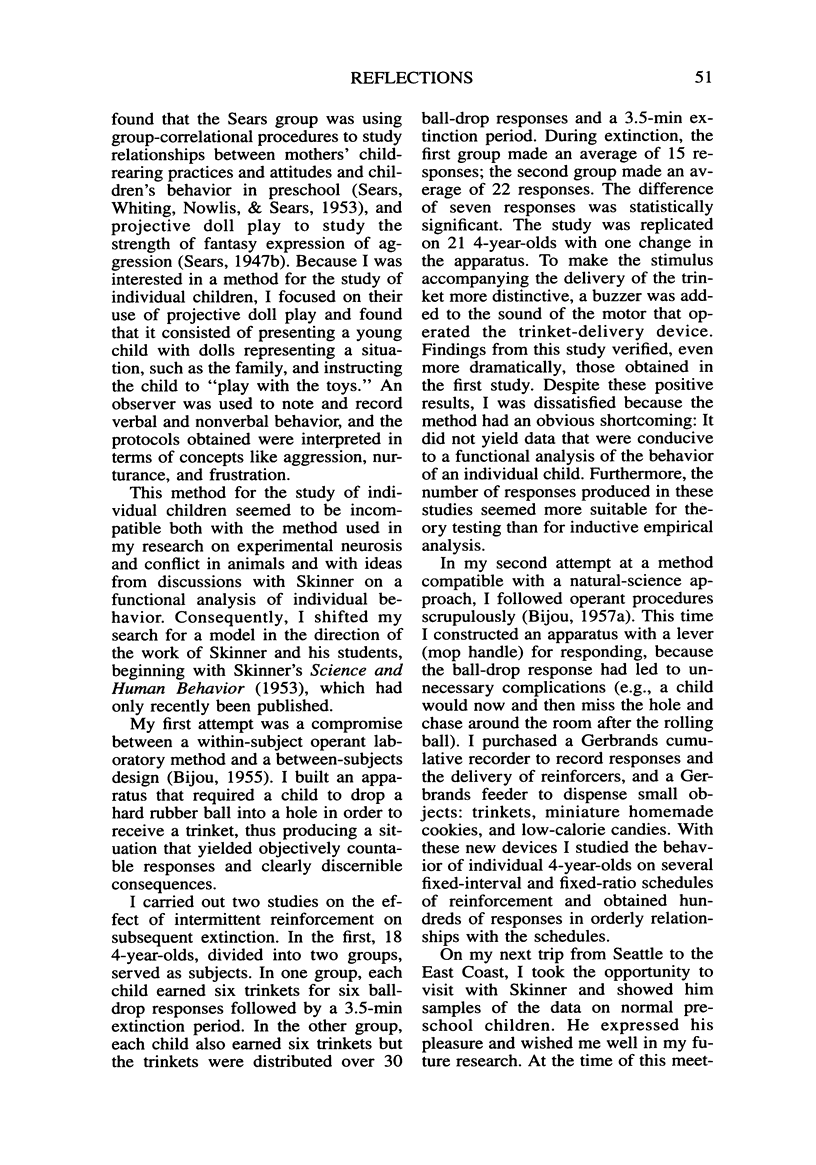
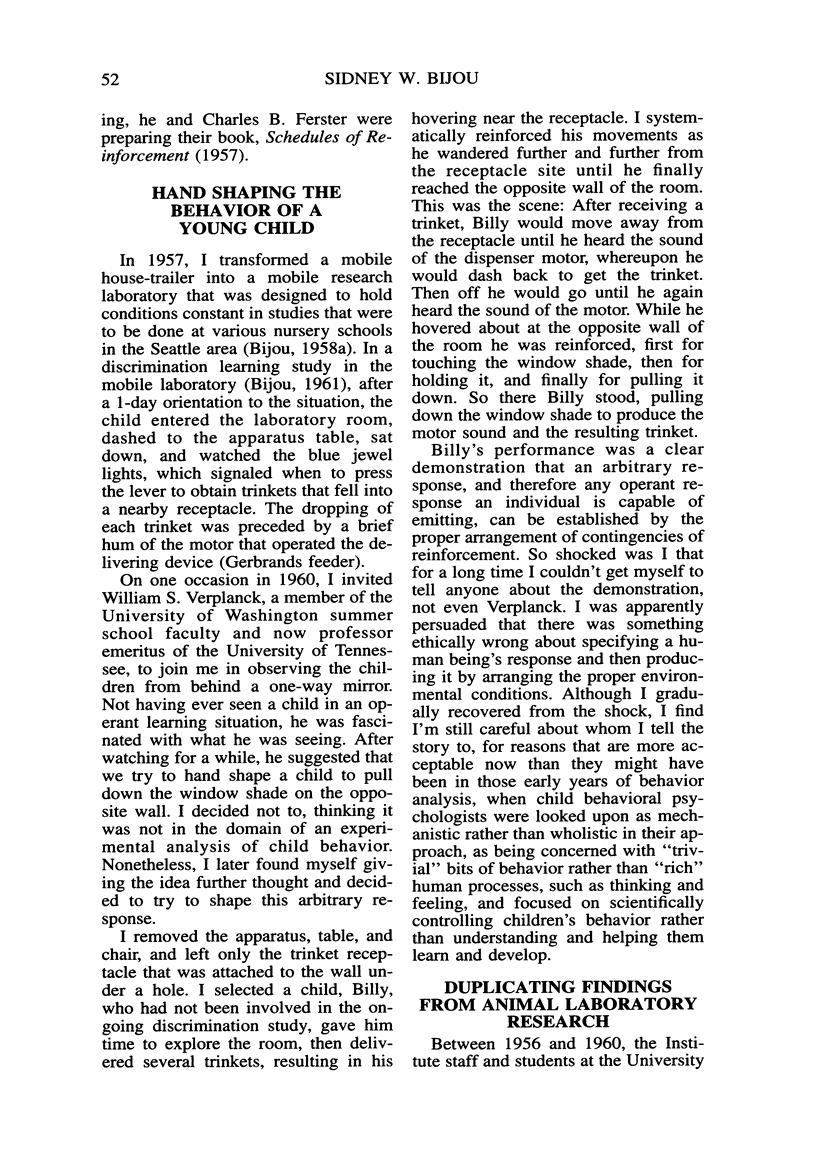
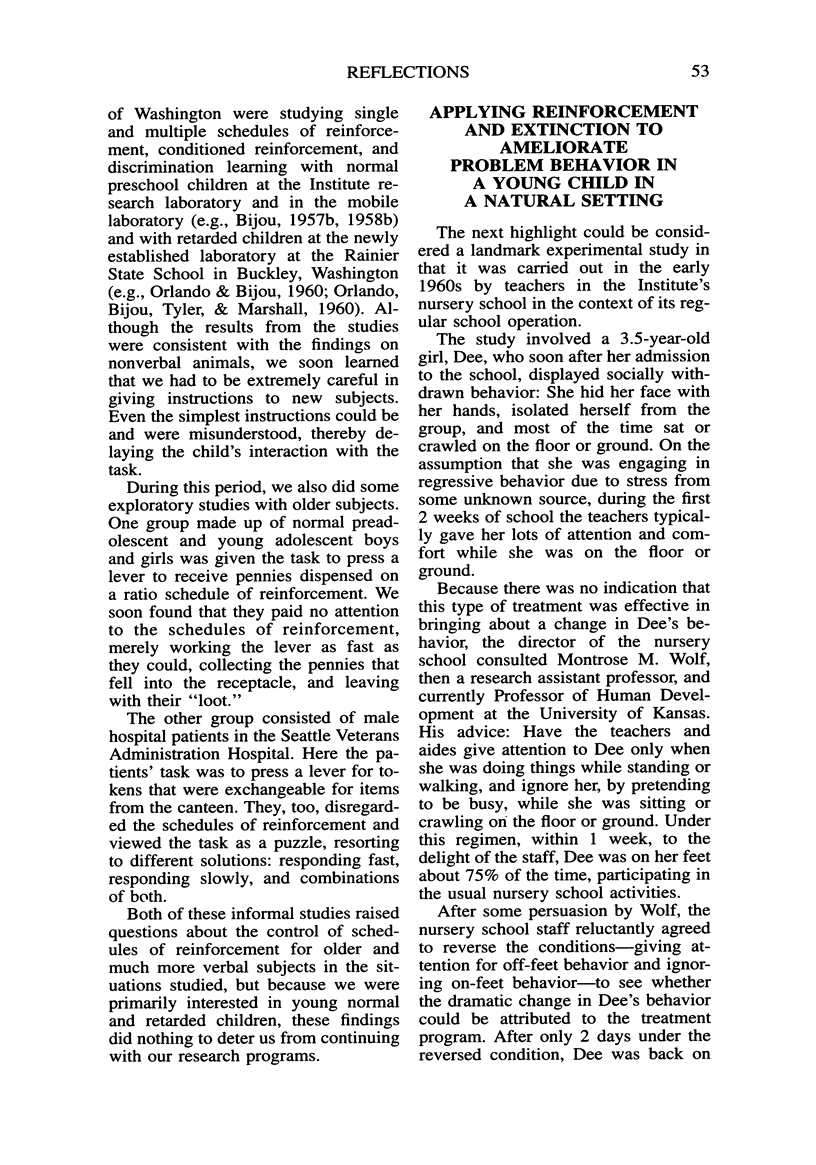
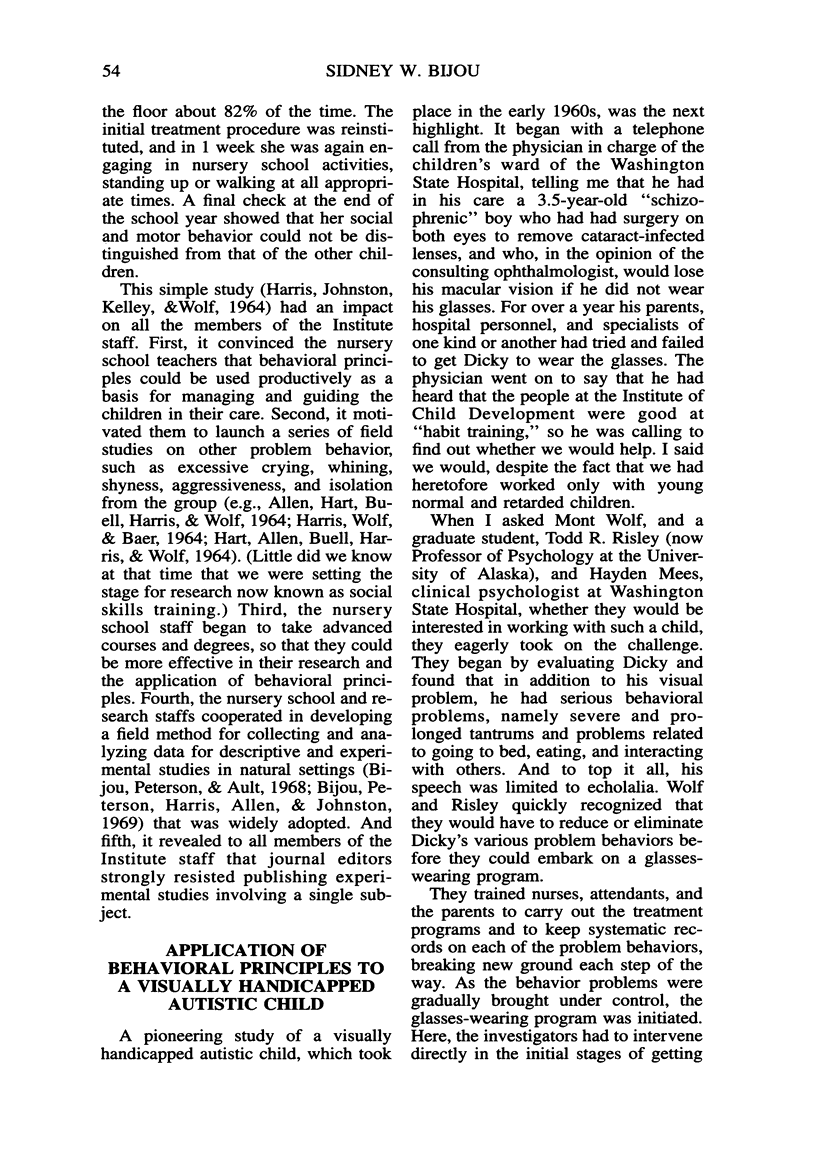
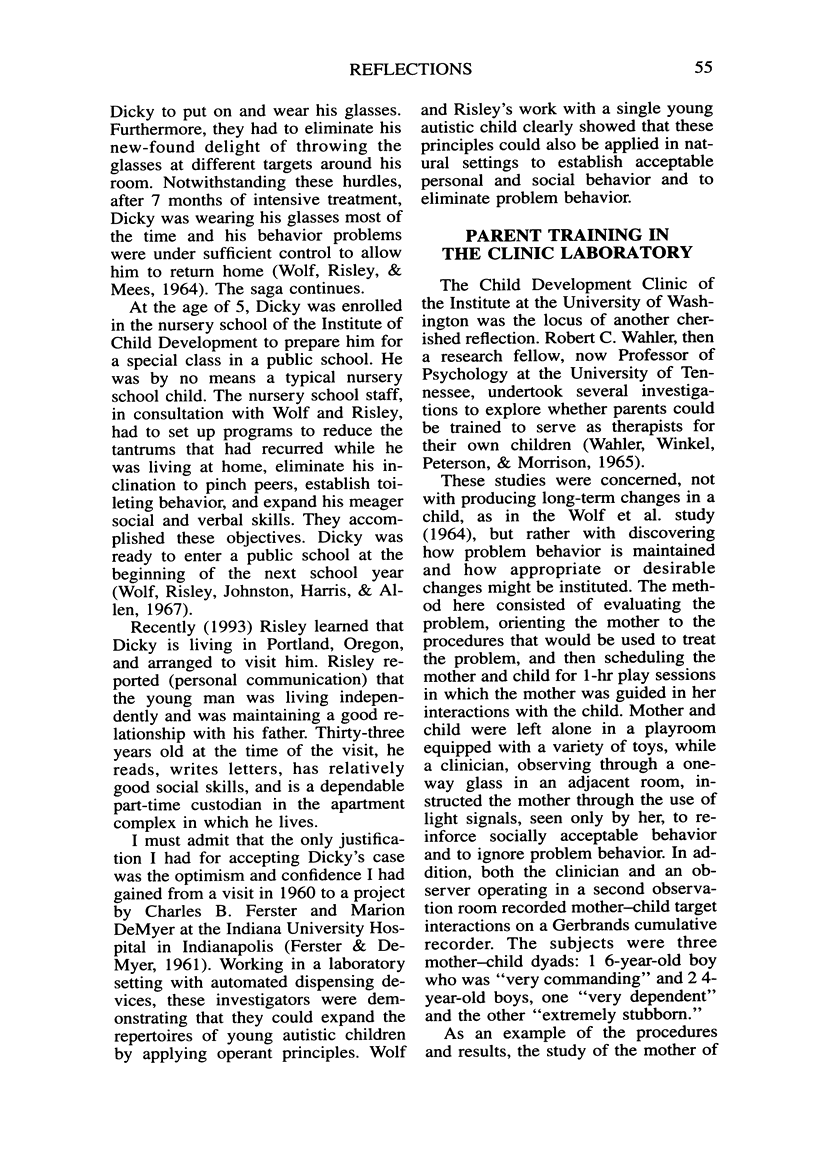
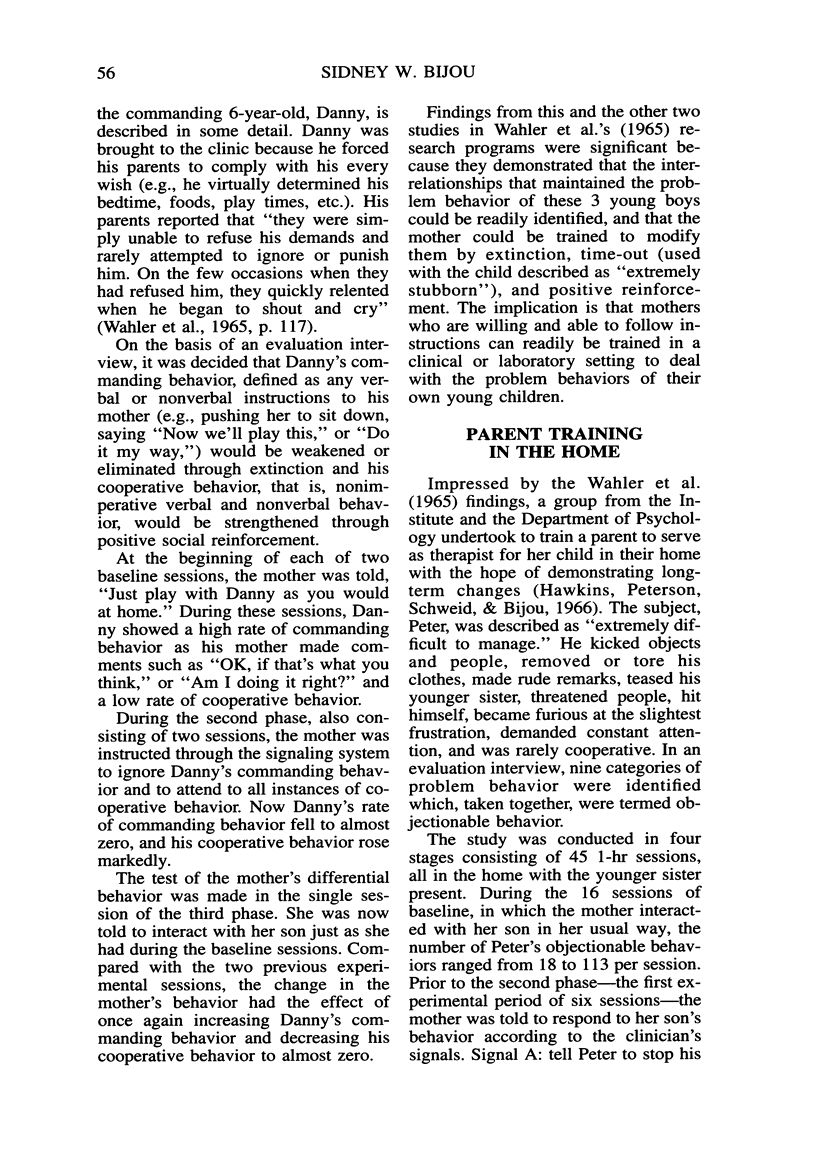
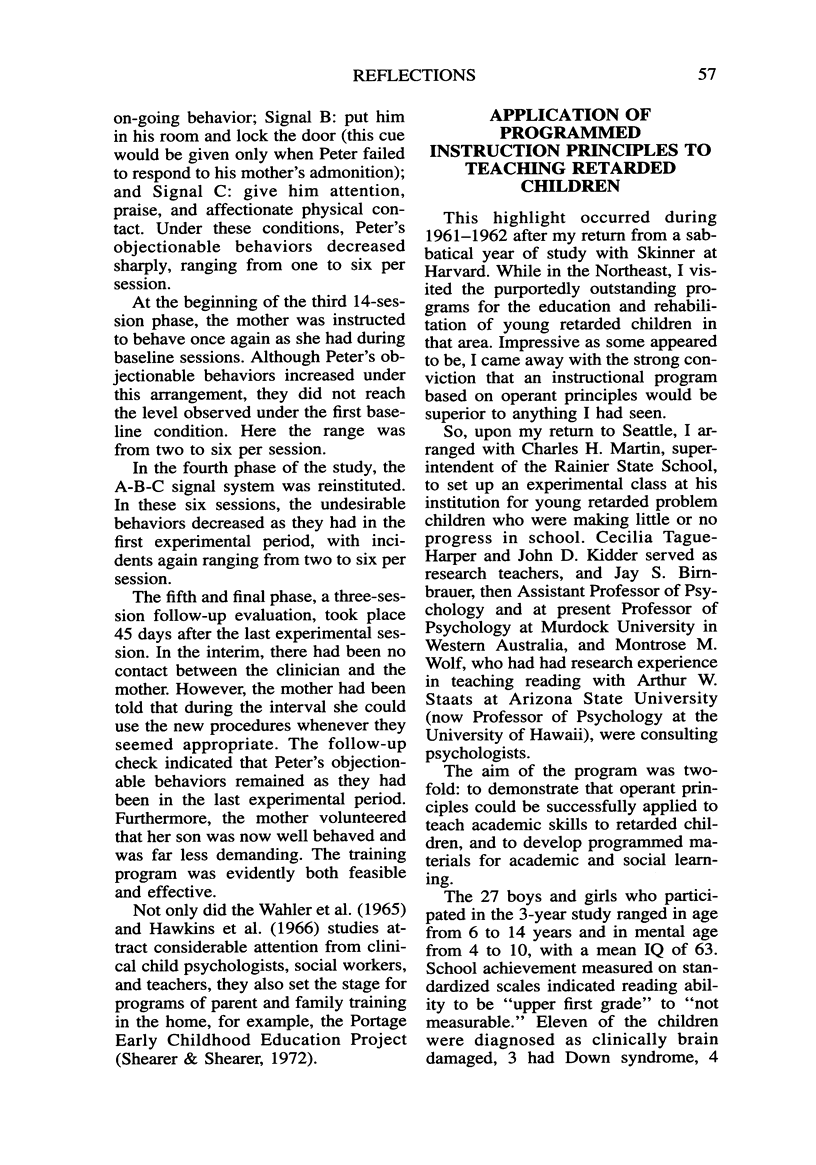
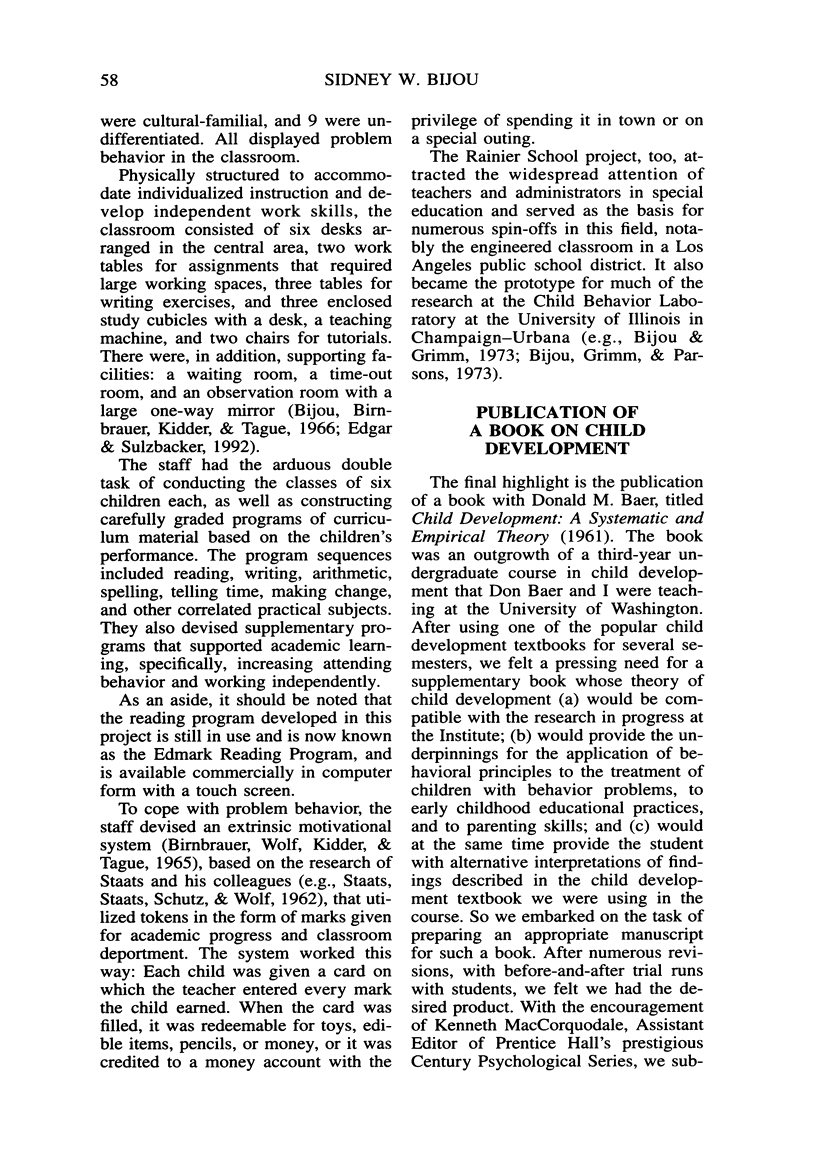
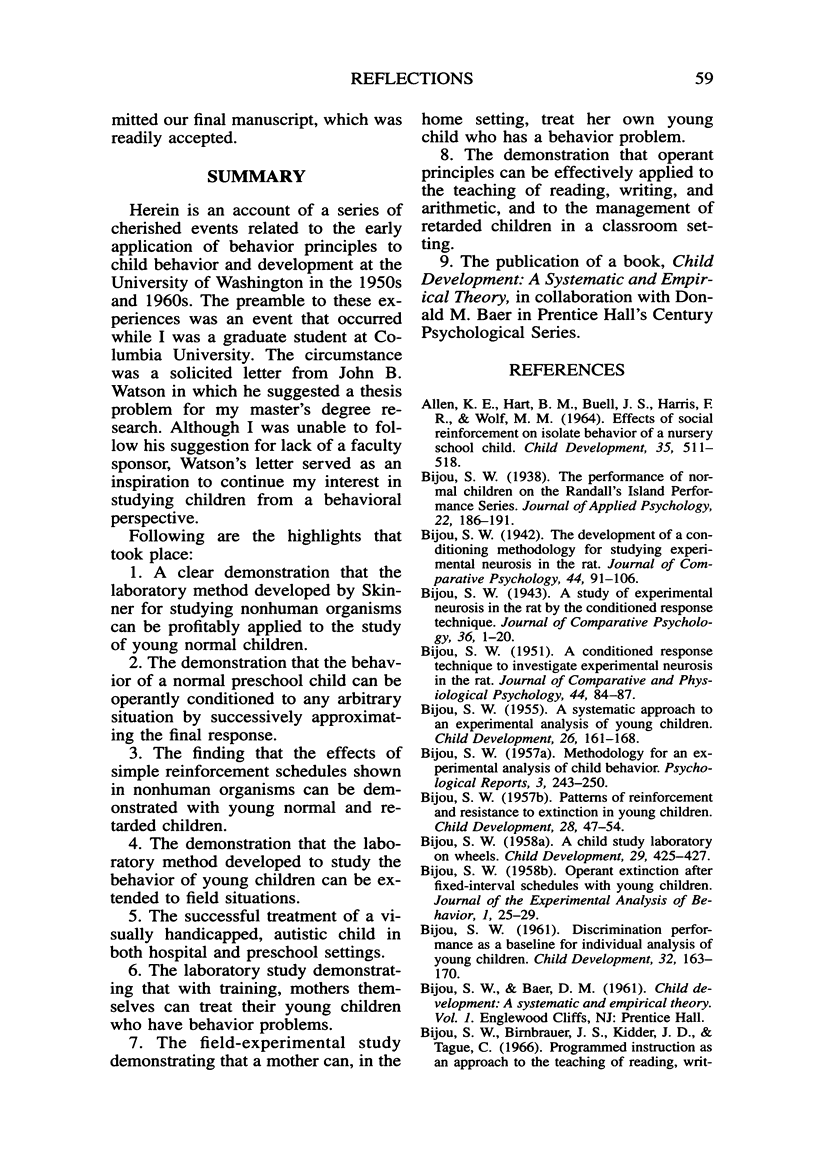
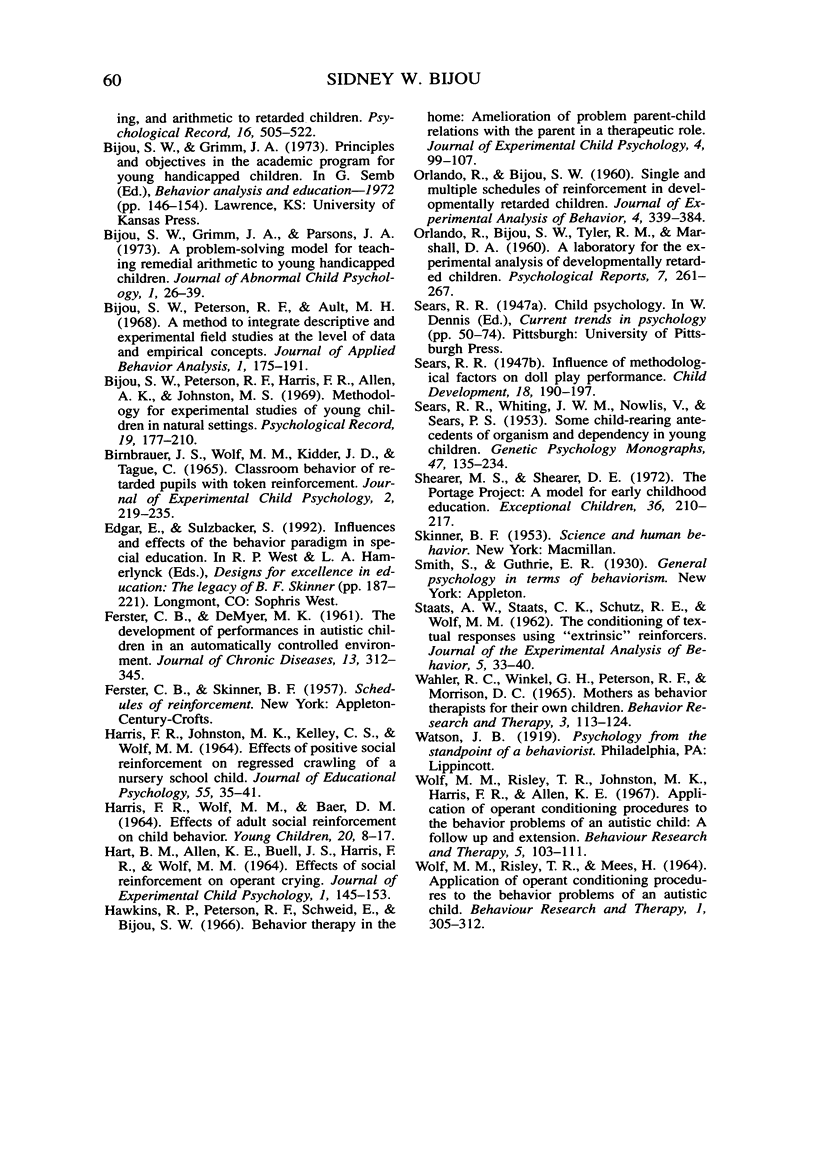
Selected References
These references are in PubMed. This may not be the complete list of references from this article.
- ALLEN K. E., HART B., BUELL J. S., HARRIS F. R., WOLF M. M. EFFECTS OF SOCIAL REINFORCEMENT ON ISOLATE BEHAVIOR OF A NURSERY SCHOOL CHILD. Child Dev. 1964 Jun;35:511–518. doi: 10.1111/j.1467-8624.1964.tb05188.x. [DOI] [PubMed] [Google Scholar]
- BIJOU S. W. A child study laboratory on wheels. Child Dev. 1958 Sep;29(3):425–427. doi: 10.1111/j.1467-8624.1958.tb04899.x. [DOI] [PubMed] [Google Scholar]
- BIJOU S. W. A conditioned response technique to investigate "experimental neurosis" in the rat. J Comp Physiol Psychol. 1951 Feb;44(1):84–87. doi: 10.1037/h0060986. [DOI] [PubMed] [Google Scholar]
- BIJOU S. W. A systematic approach to an experimental analysis of young children. Child Dev. 1955 Sep;26(3):161–168. doi: 10.1111/j.1467-8624.1955.tb04780.x. [DOI] [PubMed] [Google Scholar]
- BIJOU S. W. Patterns of reinforcement and resistance to extinction in young children. Child Dev. 1957 Mar;28(1):47–54. doi: 10.1111/j.1467-8624.1957.tb04830.x. [DOI] [PubMed] [Google Scholar]
- Bijou S. W. Operant Extinction after Fixed-interval Reinforcement with Young Children. J Exp Anal Behav. 1958 Jan;1(1):25–29. doi: 10.1901/jeab.1958.1-25. [DOI] [PMC free article] [PubMed] [Google Scholar]
- Bijou S. W., Peterson R. F., Ault M. H. A method to integrate descriptive and experimental field studies at the level of data and empirical concepts. J Appl Behav Anal. 1968 Summer;1(2):175–191. doi: 10.1901/jaba.1968.1-175. [DOI] [PMC free article] [PubMed] [Google Scholar]
- FERSTER C. B., DEMYER M. K. The development of performances in autistic children in an automatically controlled environment. J Chronic Dis. 1961 Apr;13:312–345. doi: 10.1016/0021-9681(61)90059-5. [DOI] [PubMed] [Google Scholar]
- Hawkins R. P., Peterson R. F., Schweid E., Bijou S. W. Behavior therapy in the home: amelioration of problem parent-child relations with the parent in a therapeutic role. J Exp Child Psychol. 1966 Sep;4(1):99–107. doi: 10.1016/0022-0965(66)90054-3. [DOI] [PubMed] [Google Scholar]
- SEARS R. R., WHITING J. W., NOWLIS V., SEARS P. S. Some child-rearing antecedents of aggression and dependency in young children. Genet Psychol Monogr. 1953 May;47(2):135–236. [PubMed] [Google Scholar]
- STAATS A. W., STAATS C. K., SCHUTZ R. E., WOLF M. The conditioning of textual responses using "extrinsic" reinforcers. J Exp Anal Behav. 1962 Jan;5:33–40. doi: 10.1901/jeab.1962.5-33. [DOI] [PMC free article] [PubMed] [Google Scholar]
- Shearer M. S., Shearer D. E. The Portage Project: a model for early childhood education. Except Child. 1972 Nov;39(3):210–217. doi: 10.1177/001440297203900304. [DOI] [PubMed] [Google Scholar]
- Wahler R. G., Winkel G. H., Peterson R. F., Morrison D. C. Mothers as behavior therapists for their own children. Behav Res Ther. 1965 Sep;3(2):113–124. doi: 10.1016/0005-7967(65)90015-x. [DOI] [PubMed] [Google Scholar]
- Wolf M., Risley T., Johnston M., Harris F., Allen E. Application of operant conditioning procedures to the behavior problems of an autistic child: a follow-up and extension. Behav Res Ther. 1967 May;5(2):103–111. doi: 10.1016/0005-7967(67)90004-6. [DOI] [PubMed] [Google Scholar]


